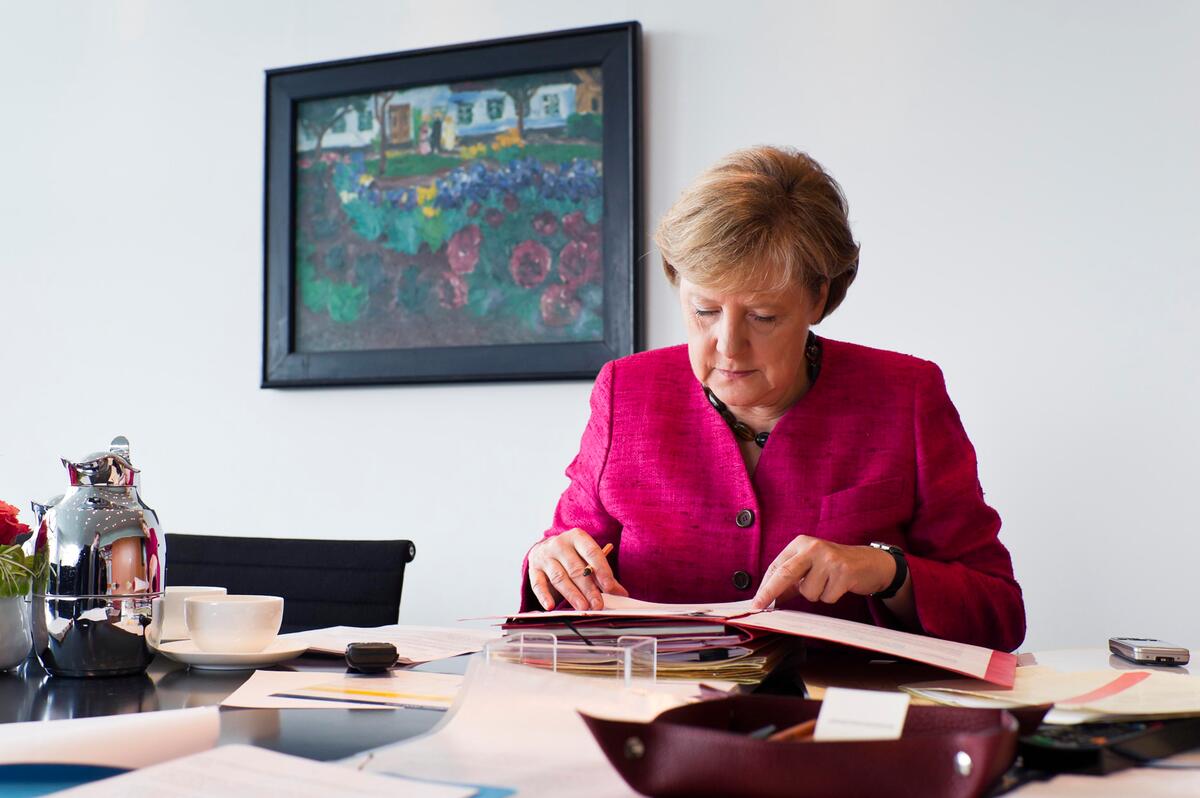Refugee seamstresses stitch together new lives in Germany

Refugee seamstresses stitch together new lives in Germany
With fine stitches, seamstress Reyhane Heidari is sewing a suit made from lace. More than that, the 25-year-old Afghan refugee is pulling together the threads of her life.
Reyhane, now working in a Frankfurt fashion workshop, grew up in exile in Iran and arrived in Germany at the height of the refugee crisis in 2015. She was lucky to get a job at the Stitch by Stitch workshop, an enterprise launched by two local designers with the aim of producing clothes for small German labels.
The all-women workshop, founded by fashion designer Claudia Frick and graphic designer Nicole von Alvensleben, employs six refugees and one German seamstress. It is a win-win situation for the refugees, who need jobs, and the workshop, which needs staff.
“We are giving them a platform to show their skills,” says Nicole. “Companies often have difficulties hiring people. They [the refugees] come from societies where handicrafts and other trades are still alive, and they want to do them.”
“There is a sisterly atmosphere here."
Reyhane had been in Germany for six months when Nicole and Claudia met her at a charity event. Reyhane was wearing a jacket that she had made herself. “It had a well-made collar and pockets,” says Claudia. “I said, ‘oh my God, she must be good if she has made that herself.'" With that, Reyhane was hired.
Doing everything from sewing on buttons to complicated tailoring, the women work for €9 an hour – 16 cents above Germany's minimum wage. “We pay ourselves the same as the staff,” says Nicole. “This is not a sweatshop.”
“There is a sisterly atmosphere here,” says Claudia. “We talk about everything."
On display is a cute black dress with a colourful pattern, commissioned by Heike Merkle, the owner of the independent Frankfurt label Death by Dress.
“Frankfurt may not be quite as vibrant as Berlin,” says Nicole, “but there is a lively fashion scene here. Customers want unique clothes, direct from the designer, instead of outfits from the chain stores. It is a cottage industry for the 21st century.”
Into this industry have walked skilled refugees with fashion experience in their home countries.
Before the war in Syria, Iman Khatibe, 40, had her own workshop in Aleppo, where she mainly made wedding and evening dresses, as well as lingerie, all with elaborate embroidery. “I learnt from my grandmother and aunt and uncle, who were all in the fashion design business,” she says.
Now she sees potential in mixing European and Middle Eastern styles. “I get some ideas from magazines,” she says, “but I don’t copy what I see on the street. My inspiration comes from inside.”
Iman leaves work early because she has a new baby at home. The younger seamstresses work on through the hot afternoon.
Esraa Ali, 21, from Damascus, is a trainee, learning the techniques of sewing. Two days a week, she goes to school and is quickly picking up German.
“My mother taught me about matching colours… My father taught me how to use the sewing machine.”
Although Esraa liked the traditional long coats and robes that women wore back home in Syria, she was inspired most of all by the Disney film 'Cinderella'. “I had never seen such pretty dresses, with tiny, nipped-in waists, and the open hair,” she says.
Esraa designed, sewed and modelled her own dress for a tailoring a competition in Frankfurt. The theme was the Roaring Twenties, so she added grey lace and black pearls to her rose-pink dress and matching hijab. “It was a sort of Syrian roaring twenties,” she laughs.
At the next table, still working with the lace for her delicate suit, Reyhane recalls how she was her own boss and had her own small business in the Iranian city of Mashhad.
She came from a long line of tailors, originally from Herat in Afghanistan. “My mother taught me about matching colours,” she says. “My father taught me how to use the sewing machine.”
Working from home, she made clothes for Afghan and Iranian clients. “I miss the textiles there,” she says, “the colours, the patterns, the Afghan carpets made by hand.”
Reyhane likes to mix Afghan and European styles. She wears jeans, even short skirts with leggings, and always the hijab, “because I like it”. She is ambitious and hopes to design her own clothes and have her own shop in Frankfurt.
After the upheaval of leaving Iran, Reyhane has picked up the threads of her profession in Germany. “Step by step, stitch by stitch,” she says. “You could say I am stitching my life together again. Yes, that’s how it feels.”



















